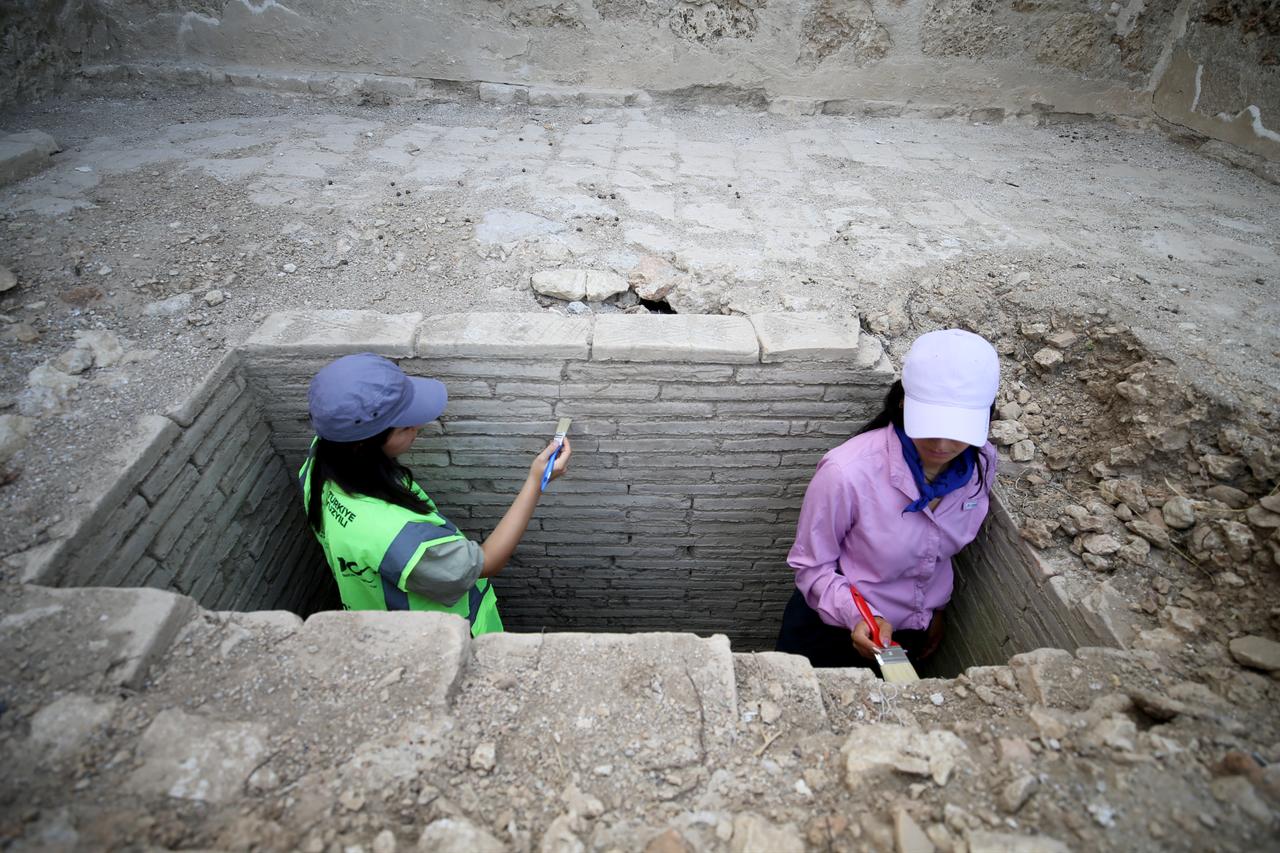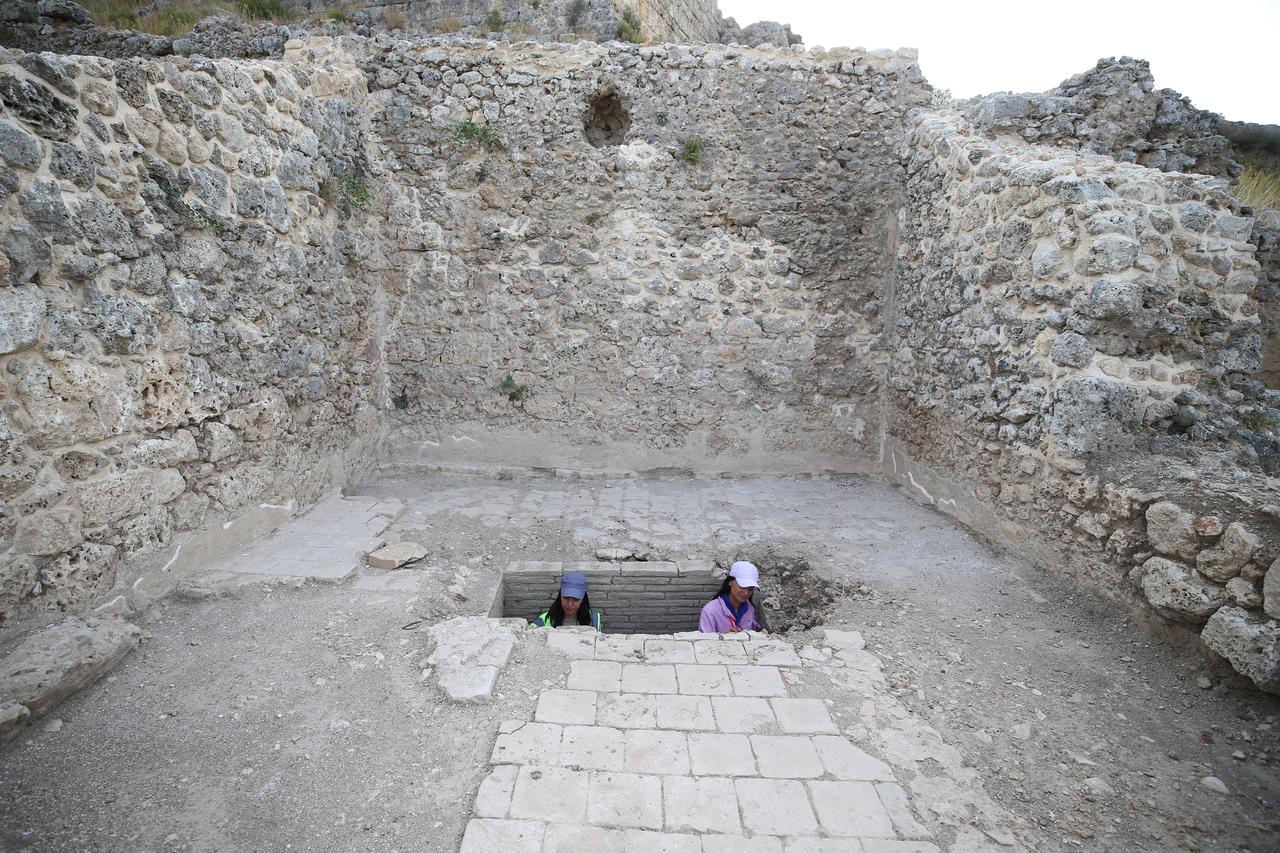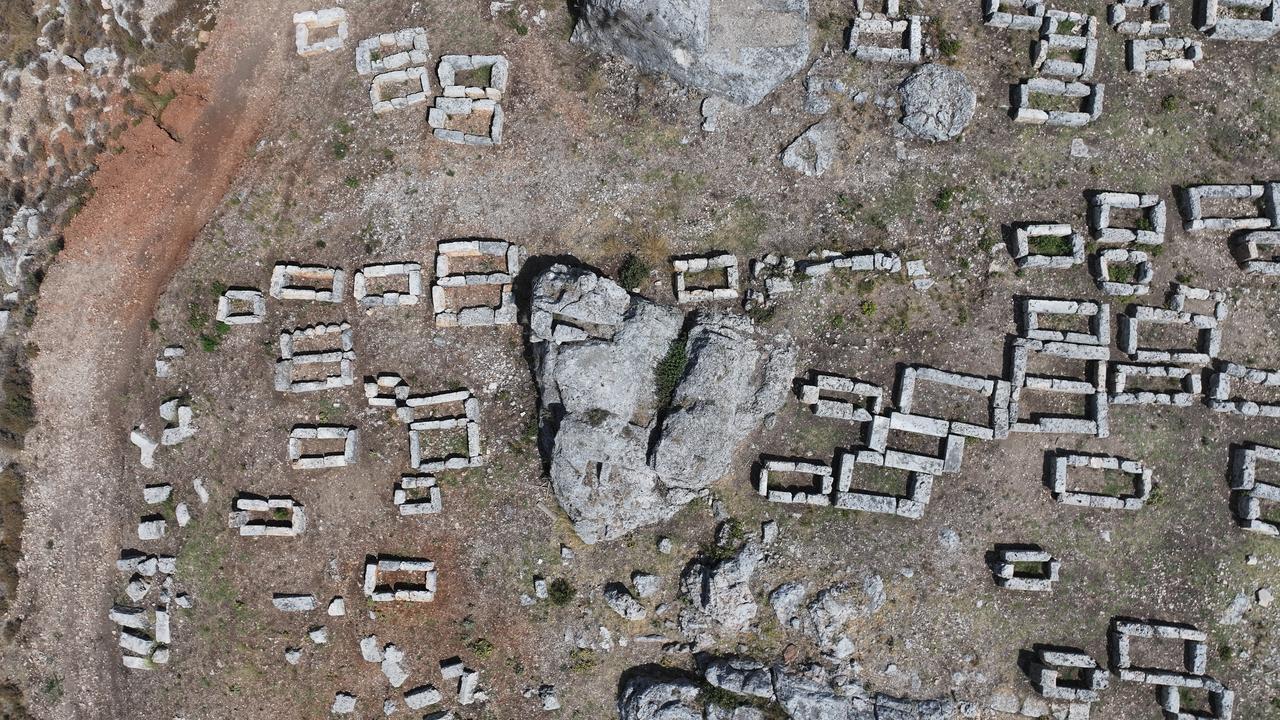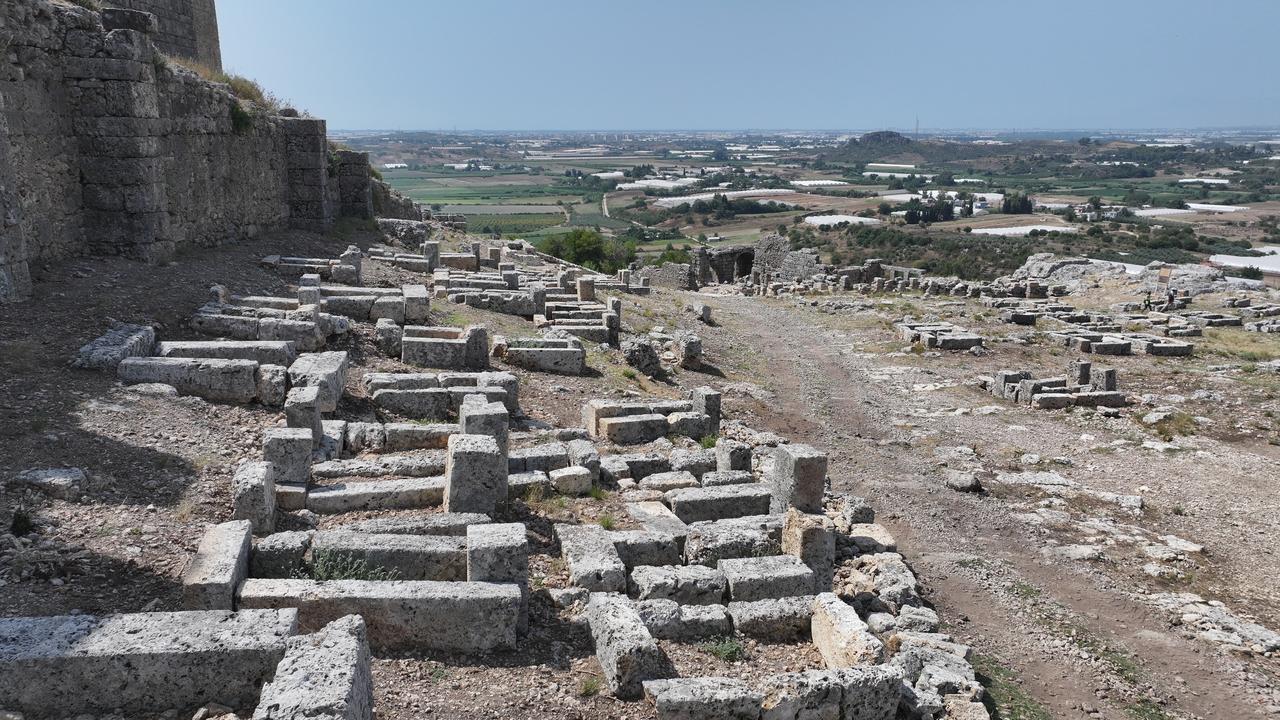
Archaeologists have uncovered four tombs from the Roman period during excavations at the ancient city of Sillyon in Antalya’s Serik district.
The discovery sheds new light on burial traditions in the region and reveals traces of later Turkish-Islamic influence.

Sillyon, founded on a hilltop in the early second millennium B.C. for defensive reasons, holds remains from the Roman, Byzantine, Seljuk, and Ottoman periods.
Excavations at the site, carried out year-round under Türkiye’s “Heritage for the Future" project, recently brought to light a rare chamber-type tomb dating to the late second century A.D.
Excavation director Associate Professor Murat Taskiran of Pamukkale University explained that the square-plan chamber tomb contained three separate burials from different periods.
“The first burial was later swept aside to make room for a second, and then a third individual was placed inside,” he said.
Grave goods, including rings, earrings, a hairpin, coins, terracotta objects, glassware, figurines and metal ornaments, were recovered, helping to date the tomb and suggesting it belonged to members of the local aristocracy.

Archaeologists also determined that the area containing the Roman tombs was reused between the 13th and 15th centuries, after Sillyon came under Turkish-Islamic rule.
At that time, it was converted into a Muslim cemetery for soldiers stationed at the fortress and their families.
According to Taskiran, architectural features of these later burials reflect traditions brought from Central Asia.
Early Turkish-Islamic cemeteries are known in Anatolia, but they remain rare in this particular region.
The team considers the find a valuable addition to the historical record, showing how Sillyon’s necropolis evolved with the city’s shifting cultural and political identity.

Conservation work has been carried out on the chamber tomb to stabilize and present it in its current state.
Taskiran emphasized that the excavation not only uncovered a significant Roman structure but also revealed important evidence of medieval Turkish presence.
He noted that the research, supported by Opet as the main sponsor, has added fresh details to both Roman and Turkish-Islamic funerary traditions in southern Anatolia.